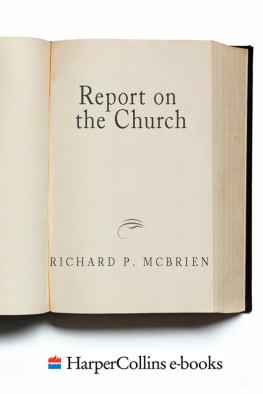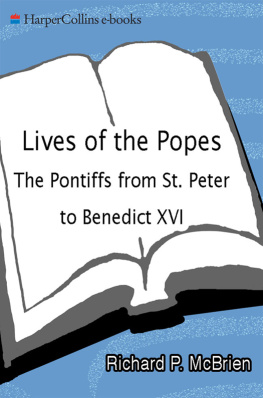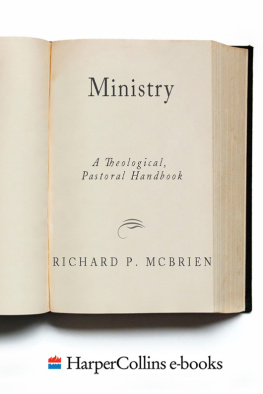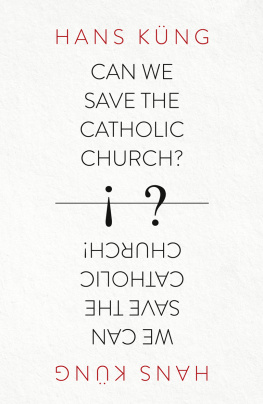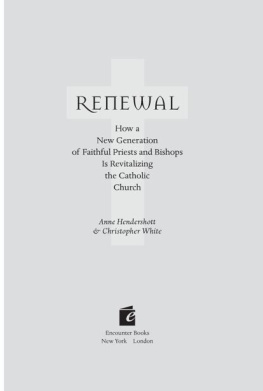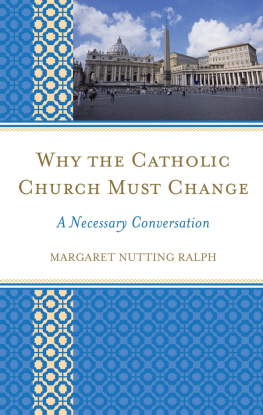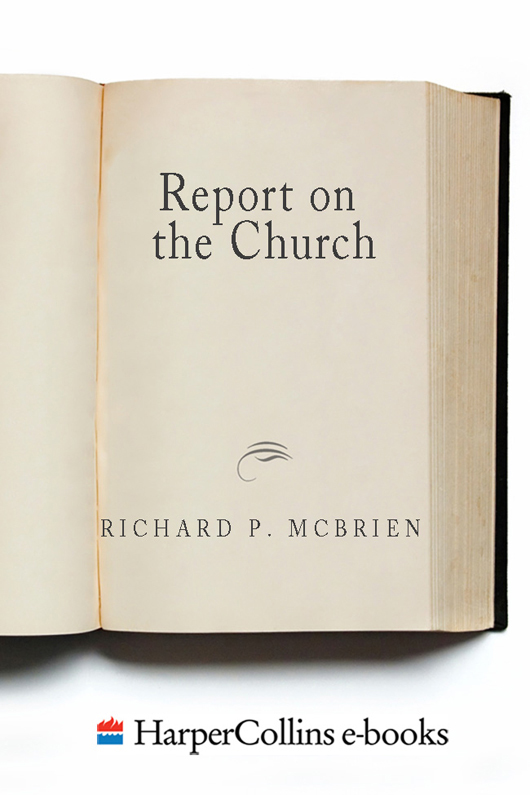The period covered by this Report on the Church represents only a thin slice of Catholic history. What is 25 years against Catholicisms nearly 2,000 years of existence?
To be sure, many sectarian Protestants would protest that latter figure. For them, Catholicism did not begin until after the so-called Edict of Milan in 313 when the Emperor Constantine granted favored status to the Church; the Catholic Church, in sectarian eyes, is a post-Constantinian phenomenon. For some mainline Protestants, on the other hand, Catholicism didnt begin until after the Reformation; it is essentially a Counter-Reformation phenomenon.
But even a theologian as liberal as Hans Kng has disputed these assumptions (see, for example, his Structures of the Church [New York: Crossroad, 1982]). He and many other scholarsCatholic and Protestant alikehave argued with some force that so-called early Catholicism existed already in the New Testament, as attested especially by Matthews Gospel and the Pastoral Epistles (1 and 2 Timothy, and Titus).
Catholicism has been extraordinarily dynamic over the course of its 2,000-year history. The first mistake people (including Catholics themselves) tend to make about it is to identify the whole of the Catholic reality with one of its particular, historically contingent moments; for example, to confuse a form of medieval Catholicism with Catholicism itself or to equate the neo-Scholastic Catholicism of the 19th and early 20th centuries with the essence of the Catholic tradition.
On the other hand, these past 25 years have not been an ordinary slice of Catholic history. The Second Vatican Council (196265) is, by any reasonable standard of measurement, one of the most significant events in the entire history of the Church, and perhaps the most important single religious event of this century. One should expect, therefore, that the quarter-century immediately following the council would have been a time of profound and far-reaching change.
It has been. And this book provides a critical glimpse into it, through the medium of one theologians chronicled reflections on that process of change. The reflections were initially published in a syndicated column of theological essays, which appear weekly in various Catholic newspapers and parish bulletins across the United States and Canada. The column is syndicated by the Catholic Transcript, the weekly newspaper of the archdiocese of Hartford, Connecticut, which is also my home diocese.
Less than a year before the first column appeared (July 8, 1966), I had completed my doctoral studies at the Pontifical Gregorian University in Rome, having lived and worked in the Eternal City during the second and third sessions of Vatican II. It was an extraordinary opportunity, which relatively few theologians in the entire history of the Church have hadto be studying theology in the same city and at the same time that an ecumenical council was being held. Not surprisingly, the council has influenced and shaped my own theological perspective and agenda more than any other single force. To understand the council is to understand something of the content and evolution of my own thought. These columns, organized according to key topic areas, provide a record of that development.
Each chapter begins with a brief introductory comment that sets the chronologically arranged columns in some wider context. For example, how has the issue of ecclesiastical authority evolved over the past 25 years? What have been the principal points of contention? Where is the discussion leading?
The chapter headings themselves tell something of the story of postconciliar Catholicism. It has been a time of ongoing reflection on the council itself (chapter 1), on church authority (chapter 2), on tensions and conflict in the Church (chapter 3), on changes in the ministries of bishops, priests, and deacons (chapter 4), on the reemergence of the laity (chapter 5), on the role of women in the Church (chapter 6), on the relationship between the Church and society (chapter 7), politics (chapter 8), and other churches and religions (chapter 9), on major personalities who have shaped and transformed the life of the Church (chapter 10), and on recent and current expressions of papal leadership (chapter 11). The final chapter provides an exercise in extrapolation. It looks beyond this 25-year period to the next century and to the beginning of the third Christian millennium.
In the end, the book offers a mixed Report on the Church. The post-conciliar Church shows signs of vibrancy and malaise alike. It is marked at the same time by uncertainty, demoralization, conflict, and alienation, on the one hand, and by a remarkable liturgical, ministerial, and spiritual renewal, on the other. As Charles Dickens put it at the beginning of ATale of Two Cities, it is for the Church the best of times and the worst of times.
I am indebted to several people for the making of this book, especially to Msgr. John Sexton Kennedy. It was Monsignor Kennedy who, as editor of the Catholic Transcript, first encouraged me to write a weekly column. I am also grateful to his successors, the late Donald Foskett, Vivian Stephenson, and the current editor, David Fortier, and to all of the Transcript staff who have assisted in the preparation and distribution of the essays.
I am indebted in a special way to br. Donal Leader, my former graduate assistant, for reviewing almost 1,300 columns and for his advice and computerized assistance in selecting and topically arranging a representative sample of them. My friend and colleague, Thomas F. OMeara, O.P., provided the initial encouragement to do this book. I would add a warm word of thanks to my secretary, Donna Shearer, for retyping many of the earlier columns, which were done before the invention of the personal computer, and for her other help in preparing the manuscript for publication. A final expression of gratitude goes to Prof. Martin E. Marty, of the University of Chicago, for graciously accepting my invitation to write the Foreword.
Richard P. McBrien
University of Notre Dame
October 28, 1958 | Card. Angelo Giuseppe Roncalli, Patriarch of Venice, is elected pope and takes the name John XXIII. |
January 25, 1959 | Pope John XXIII announces his intention to call an ecumenical council. |
May 15, 1961 | Pope John XXIII publishes his first major social encyclical, Mater et Magistra. |
December 25, 1961 | Pope John XXIII formally convokes the council via an apostolic constitution entitled Humanae Salutis. |
October 11, 1962 | Official opening of the Second Vatican Council. |
November 21, 1962 | Pope John XXIII intervenes in the councils deliberations to rule that the traditional schema on revelation, which had been rejected by more than half but not the necessary two-thirds of the council fathers, should be redrafted by a new committee. |
April 11, 1963 | Pope John XXIII publishes his second major social encyclical, Pacem in Terris. |
June 3, 1963 | Pope John XXIII dies. |
June 21, 1963 | Card. Giovanni Battista Montini, archbishop of Milan, is elected pope and takes the name Paul VI. |
December 4, 1963 | The Second Vatican Councils Constitution on the Sacred Liturgy, Sacrosanctum Concilium, is promulgated by Pope Paul VI. |

